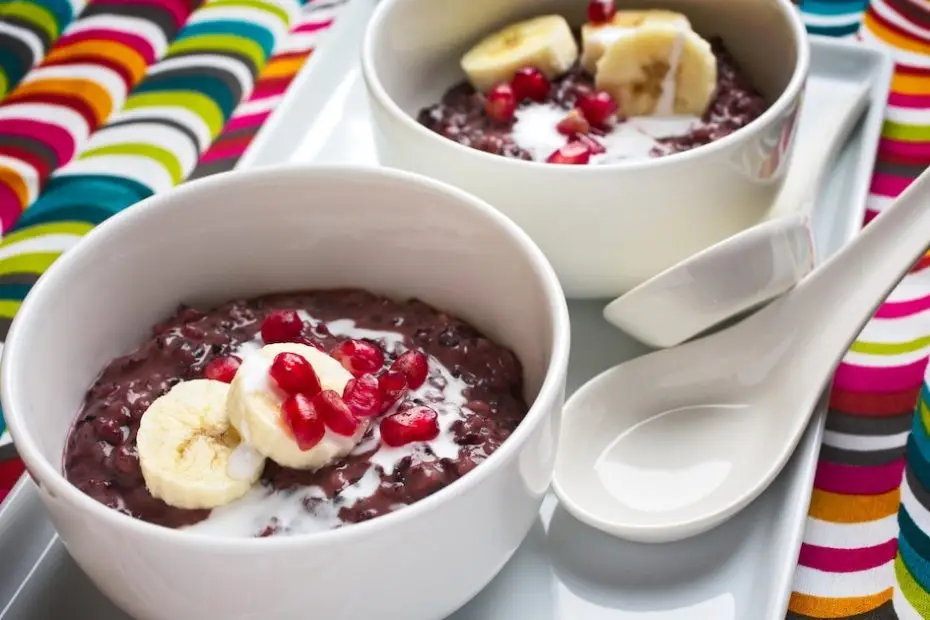Coconut everything will be back in fashion, like this black rice, banana and coconut breakfast bowl. Picture: Deb Lindsey/The Washington PostPicture: For The Wasington Post
Restless foodies, home cooks and industry professionals are eagerly waiting for the doors to open on the world’s virtual smorgasbord of new food and drink trends for 2017.
With various motives, they’re eager to join the rush to the Next Big Things, as decreed by a combo of consumer interest and savvy marketing.
Which came first — the Korean fried chicken or the baked egg? Regardless, selfies will be rampant.
So what’s going to be hot and what’s not, and who decides?
Depends on who is asked and what stakes are involved. Everyone, it seems, has an opinion.
The global marketing firms that serve as consultants to the restaurant and supermarket chain industries have their picks (“fierce flavours” at breakfast, more ethnic-inspired dishes), as does the National Restaurant Association in the US (savoury desserts, healthy children’s menus) and even the Wall Street Journal (the versatile jackfruit).
Reporting on likely trends are the many food-centric websites and magazines. They all agree on at least one thing: Though it might seem contradictory, we want to get back to (or discover) foods and techniques grounded in tradition (a hearty stew is always in fashion) while continuing to “explore global cuisines” (what is Brazilian feijoada, anyway? Oh yeah, a hearty stew).
There are hundreds of well-reasoned (and not so much) guesses about 2017’s “hot” list, but no guarantees; for starters, few things seem sacred.
It’s forecast that kale will be replaced by a yet-to-be-named superfood, which could be seaweed, Swiss chard or cauliflower.
Move over kale — there’s a new superfood in town
Sriracha sauce may be nudged aside by harissa, the North African hot chilli pepper paste.
Sugar-heavy cool drink sales are clearly down, and makers of sparkling water and bottled teas are betting their products will become the next favourite non-alcoholic drinks of the world’s millions of millennials. Though a concern could be that their favourite drinking vessel is the Mason jar.
As for past trendsetters such as devilled eggs and veggie chips, you’ll find them over there behind the box of Cronuts and plate of fairy bread. No, to the left of the avocado toast and stack of maple syrup-glazed bacon, next to the egg-white omelet. You need to move the ramen burgers, the ube and the chlorophyll extract to find them.
We gazed into a few crystal balls unveiled by some expert observers, as an indicative sampler.
Continuing their runs from 2016 will be coconut everything, Asian noodles, gourmet mac ‘n’ cheese, flavoured spirits, “authentic” Mexican cuisine, charcuterie, mocktails, oatmeal with unusual toppings, more farmers markets, grilled veggies, preserved anything, craft beers and cocktails, more flavours of granola, more uses of ancient grains, and creative ways to use fresh turmeric root in cooking — given the excitement over its purported health-inducing powers.
Trends that could take off this year include enhanced transparency in food labelling; re-purposing food waste (simmering Parmesan cheese rinds in pasta sauce always works); sustainable seafood (focused on “green” fisheries and improved aquaculture systems); savoury desserts (spaghetti-flavoured ice pops); artisan cheeses; coffee served in chocolate-coated ice-cream cones; more restaurants offering breakfast all day
There’s also more choices for filling “bowls” (beyond acai and poke); pastas made from grains other than wheat (lentils, chickpeas); smoked and flavoured sardines (because everybody loves fish breath); bone broths; cuts of goat meat; the “discovery” of African spices (berbere, dukkah); chilli heat in surprising dishes (cayenne woos ice-cream); and — you’ll like this one — that trusted antioxidant, dark chocolate, at breakfast.
Look for more plant-focused restaurant menus (even Brussels sprouts can be a main dish) and vegetarian comfort foods such as chicken-fried portobello mushroom steak, avocado fries and zucchini hash browns and pancakes.
Also, the use of Japanese condiments in particular could continue its roll (ponzu, kelp, plum vinegar), coupled with a general trend for “creative condiments” such as chilli pepper jam, black garlic puree, adobo sauces and sambals, sumac and fenugreek, and salsas made from vegetables (beets, bell peppers) and fruits (strawberries, watermelon). What do you think of chocolate-chip hummus, beet yoghurt and chipotle-cherry jerky? Don’t answer until you’ve tasted.
For another perspective, we turned to gastronome Ed Levine, the “founding father” and chief executive of the James Beard Award-winning site seriouseats.com: “You can always tell what the trends are by when the big chains put out their versions.”
In the dine-in world, Levine noted “people gravitating toward a grazing style of more casual and less costly (eating).”
“And restaurants are figuring out how to accommodate that,” he said.
One way is with those aforementioned bowls. “People are looking to eat healthfully, but most of them aren’t willing to sacrifice taste,” Levine said.
But while 2017 looks to be another game of chutes and ladders for many food trends — including home-delivered meal kits, sous vide cooking and “butcher-to-table” operations, Levine points out that the new year won’t be all about change.
“Preserving and fermentation are here to stay,” he said.
“Comfort foods will always be with us — mashed potatoes, french fries, mac ‘n’ cheese, fried chicken, ice-cream, pizza, grilled cheese.
“Those things will never die, nor should they.”
Source: The West Australian



